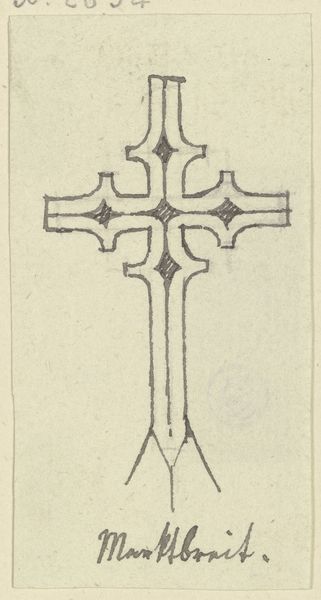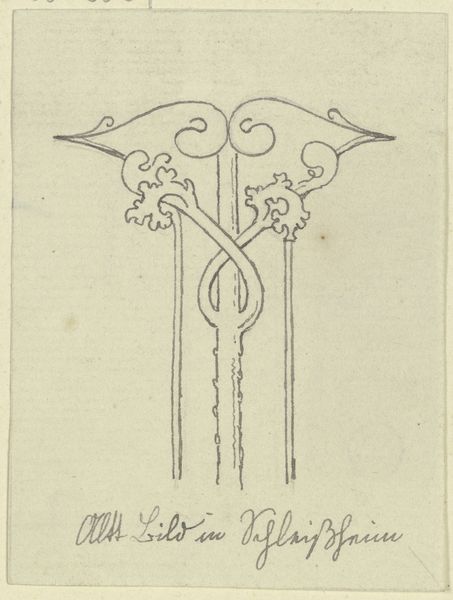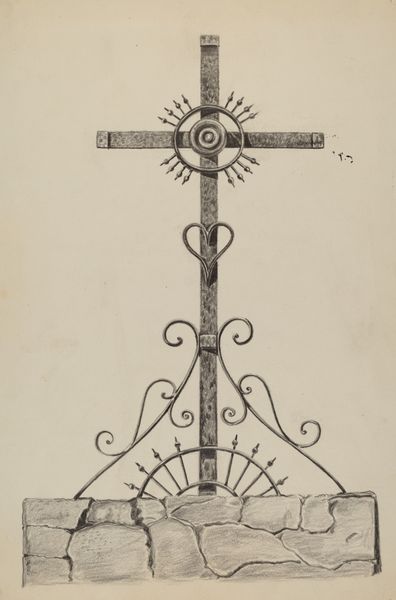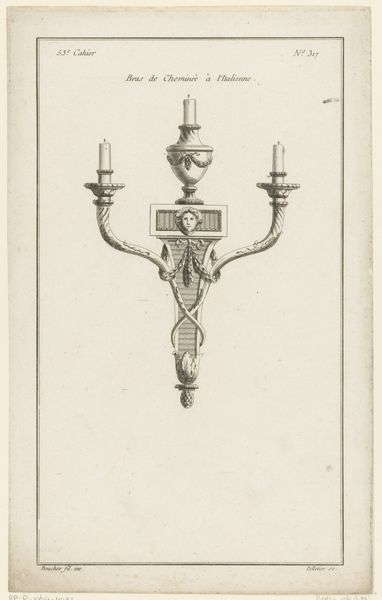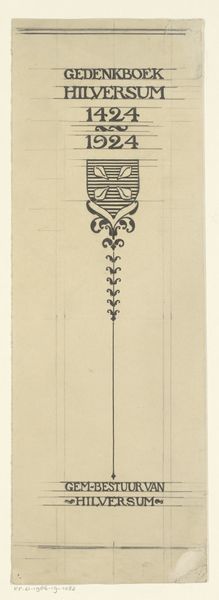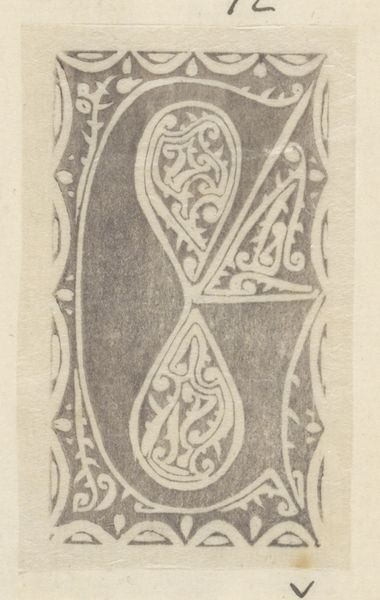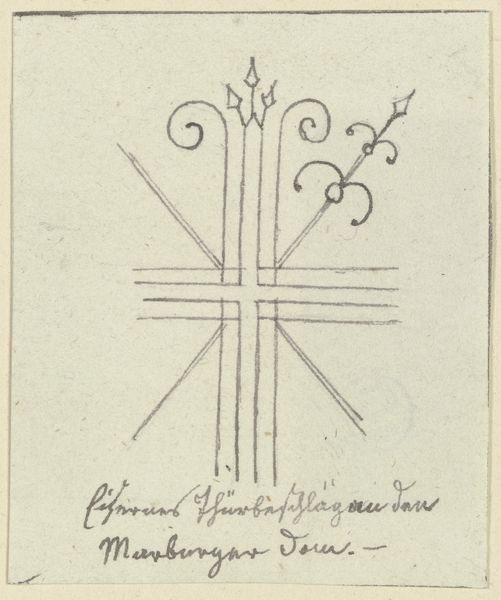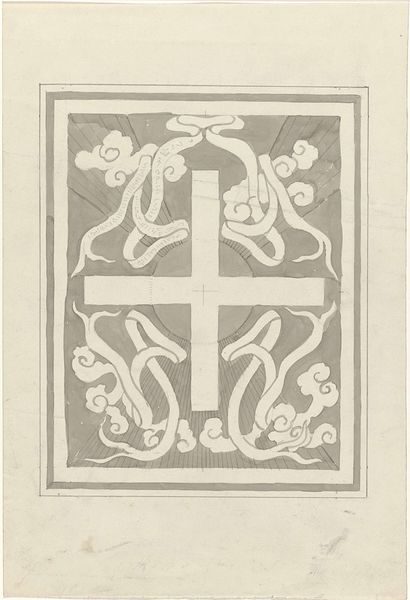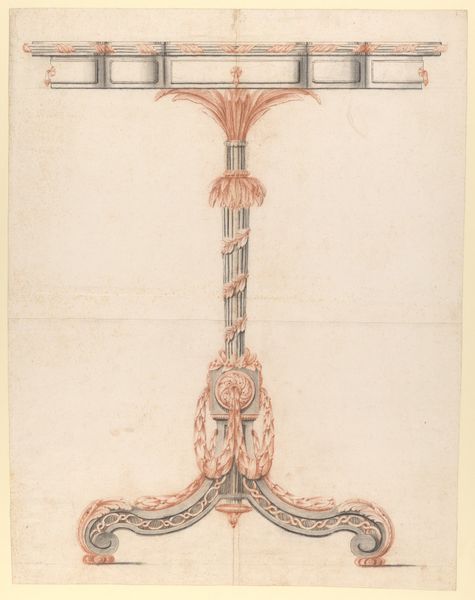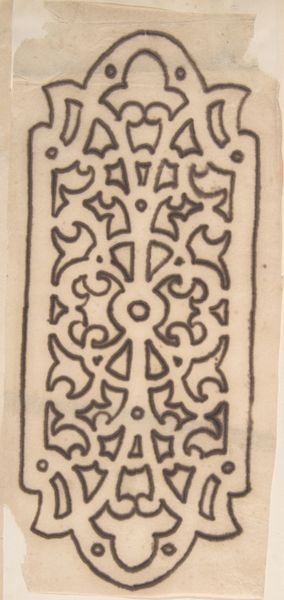
drawing, ink, pencil, architecture
#
drawing
#
medieval
#
ink
#
geometric
#
pencil
#
line
#
architecture
Copyright: Public Domain
Curator: This is a pencil and ink drawing entitled "Kreuzblume auf einem Wimperg in Heilsbronn" by Karl Ballenberger, currently residing here at the Städel Museum. Editor: My first thought is that the linework, although simple, suggests a complex system. It's architectural, rigid, yet the faint pencil gives it a tentative, almost ghostly feel. Curator: It's fascinating how Ballenberger captured this Kreuzblume. We can interpret it as more than a mere architectural sketch. Consider the placement within Heilsbronn; the socio-religious implications are hard to ignore. Such ornaments weren’t just decoration; they symbolized the sacred aspirations of the community and their commitment to spiritual ideals during the Medieval era. Editor: I agree it surpasses pure documentation. The choice of pencil and ink, materials readily available, also speaks to the accessibility and everyday importance of these structures to the artist. You almost get the feeling the lines were sketched as quickly as possible, emphasizing its reproducibility, which contrasts beautifully to the traditional image of stained glass that were specifically and uniquely commissioned. It's also striking how the geometric framework interlocks with the soft, almost whimsical drawing of the stars on the bottom. Curator: Exactly. These kinds of artworks are important documents in understanding how certain cities and architectural details developed and were perceived by artists at certain points in history. This specific example demonstrates the endurance and cultural reproduction of religious iconography within architectural contexts during the medieval times. Editor: It provokes a curiosity about the craftsmanship behind those grand buildings and how these smaller depictions help us engage with materiality from a personal point of view, outside formal commissions and beyond monumental propaganda. I wonder about the amount of hours spent into drafting this particular cross, both the planning and labour involved to construct this ornament on the building itself, and how Ballenberger captured all these in an artwork. Curator: Indeed, considering the historical context, it offers us a window into both the tangible and the intangible elements that shape our cultural heritage. Editor: Yes, it certainly moves us to rethink not just what we see but also the means through which art and architecture become embedded in the public sphere.
Comments
No comments
Be the first to comment and join the conversation on the ultimate creative platform.
